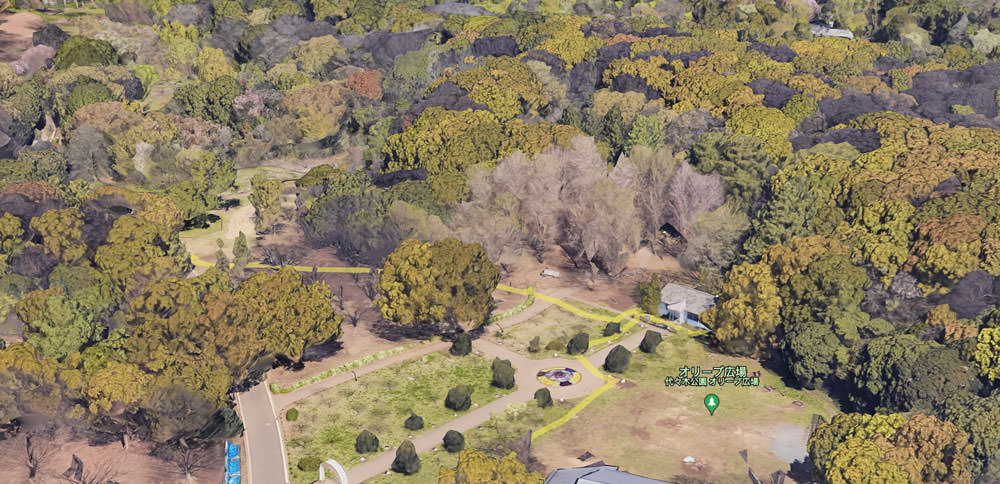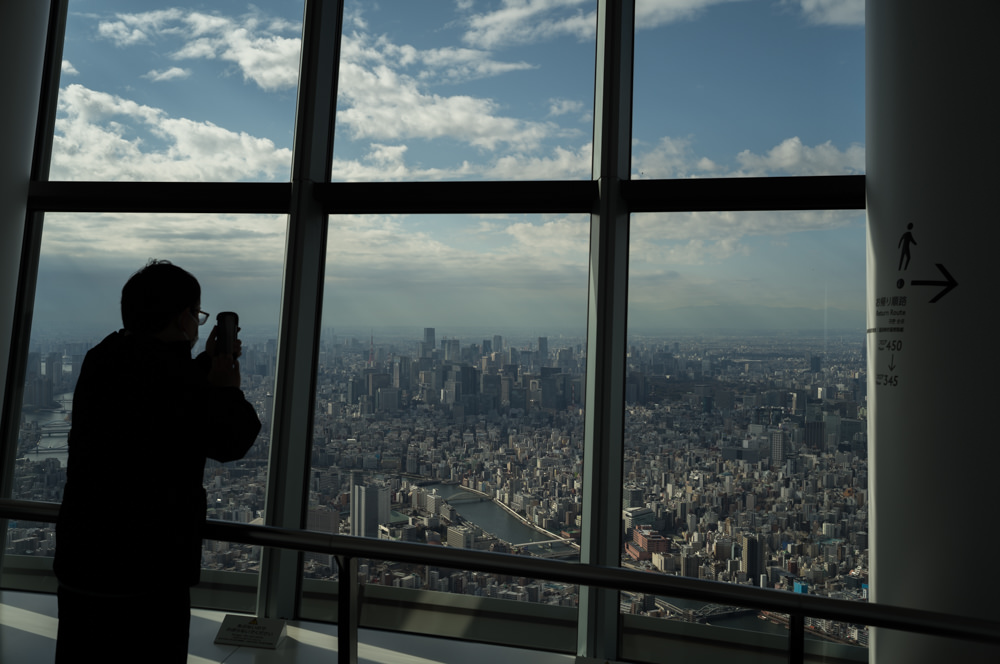
Note: This was originally published by Why Is This Interesting; this is a slightly modified / updated version of that text.
Once again I walked Tokyo. It was cold! It was good!
I mean, I’ve been walking Tokyo for twenty-two-and-a-half years, but I “performed” another dense, seven-day mega walk of the city a few weeks ago. The goal with these walks is to look closely at the city, mostly offline, with minimal distractions, and maximal control of attention and openness of mind.
There are many ways to know a city, but for me, the “best” way is to walk a city. And the best way to really know a city — a thing that has no static configuration, that is forever morphing, changing based on politics and laws and immigration and culture and industries and natural disasters and aging populations and other unseen global forces — is to rewalk and to do so over decades.
I find that subways divide a city in my mind, that each station becomes an island. It took me years to realize you could walk from Asakusa to Shibuya in a couple hours — those two places felt as far away as Istanbul from Paris. But, no, not only can you traverse the distance on foot, but the incredible diversity and density of a city like Tokyo rewards the walker each and every block.
The first ten years I lived in Tokyo — from 2000 to 2010 — the city was relatively static. I mean, the whole country felt relatively static. Relative to the manic global obsession with Japan today, the country was somewhat “forgotten,” largely off tourism maps. Its hipster cred weirdly diminished — cool but fringe. The tiny vinyl bar JBS was running in its little nook behind Dogenzaka, but was yet to be filled by every tourist with a Raya account. You could still go to the old Tsukiji tuna auctions without issue, wander around the grounds with a camera in hand largely un-accosted. Nobody cared about you. These were special years in their own strange way.
The “economic miracle” dovetailing into the Bubble Years of the 80s popped in 1991. By 2000, the momentum had slowed to a crawl. Of course, none of us who had arrived to study or work in the city understood that. We were simply ensorcelled by TOKYO — the vast, all-caps, endless concrete slab spreading out before us.

Slowly, and now quickly, the face and topography of the city is changing. These last ten years feel like they’ve brought 10x more change to the city than the previous twenty. Foretold, in part, by Roppongi Hills (which went up in 2003). Contemplating the rise of mega-developments from 2010 onward can send a head spinning. The pace of development was only further amplified by the run up to the 2020 Olympics. Harajuku Station, once cute, wooden, is now glass and steel like so much else.
Shibuya Station, a place that saw little meaningful change for decades (and was but a nub in the early 20th century), has now gobbled up — like the hungriest of concrete eating amoeba — much of the southern side of the station. The Hikarie multi-use office/mall/performance center went up in 2012, taking out a huge swath of older, low-rise buildings. Scramble Square opened in 2019, effectively capping the old station with a new building. The Tōyoko Line was moved underground, and the previous above-ground tracks transformed into the Shibuya Stream skyscraper and Shibuya River pedestrian pathway, swallowing even more of the older, winding rōji alleys filled with funky bars and restaurants that encircled that side of the station. Even more development is in the works. True long-now planning. It’s awe-inspiring on many levels — the station itself has rarely hit a blip of service disruption, despite, effectively, rebuilding itself in realtime. A full ship of Theseus before-and-after.
North of the station you’ll find yet more transformation — all of the once grungy Miyashita Park has been rebuilt in the style of a corporate polished modernist mall. It’s anodyne and mind-numbing and I’ll never go into any of those shops, but its presence is also oddly stimulating — the city refuses to sit still, no matter how dumb some of the stuff it builds may be.
In my recent TOKIO TŌKYŌ TOKYO² walk I wrote this about the park:
I walk the tracks north of Shibuya and realize I’ve never gone up in the new Miyashita Park development. Fine, I think, let’s see what’s on the top of this mall.
I escalator up one story. The building chirps an announcement: Don’t just keep on shopping, remember to look around, too! I look around, it’s all shops.
I escalator up another story to the roof. The weather today is fabulous. Aside from the cold, and the whipping wind tunnels of mega-developments, it’s quite warm in the sun and the sky is blue and the clouds delicate and lacy and the crows are squawking and playing with trash in the street.
Grass. This is nice, I think. And then I start walking and almost fall over a tight-strung rope. The greenery has all been roped off at knee level. No playing here. What is there to do on the roof then? There is Starbucks.

The rest of Tokyo, too, is being pushed and pulled. Thanks to deregulation, “tower Mansions” are popping up in unexpected places — on the edge of Kagurazaka’s old low-rise hanamachi Geisha district, for example, much to the chagrin of the neighborhood groups. As outlined in the excellent Emergent Tokyo book, these neighborhood shop-owner collectives are organizing with more fervor than before to protect the energy and community of sometimes centuries-old neighborhoods. This isn’t NIMBYism, explicitly — it’s more like, Hey Build The Fifty-Story Tower A Couple Hundred Meters Down Adjacent To The Major Avenue Not In The Middle Of a Thriving and Vibrant Local Community-ism.
I’ve been eating and drinking in Kagurazaka for decades. I love it, but to think about what it used to be — even just ten years ago — can break a heart. Something is being gained, for sure (housing units, density, access), but something else is lost in this maelstrom of development happening across the city.
A single-story sento public bath I used to visit in Ebisu has been replaced by a thrumming tower of humans, all largely strangers to one another. The tower houses hundreds of people and families, but the sento brought together hundreds of people. It’s fun to think about the tradeoffs of these transformations. There are rarely “correct” answers.
In a 2014 interview, book selector Uchinuma Shintaro and izakaya and Japan jazz specialist Michael Molasky discuss the “third place.”
Uchinuma: In your own writing, you cite the Japanese public bath or sento as another venue that functions as a third place.
Molasky: Yes. To me, the essence of the third place is that it is one where you are greeted as an individual. If a shop and its owner have a strong personality or individual character, then this attracts people who appreciate that, and a loose relationship naturally develops. Over time, these regulars nurture the place along with the owner.
“One where you are greeted as an individual.”
“Strong personality.”
“Regulars nurture the place.”
I think together these form a trenchant explanation of why chain shops don’t feel cozy, where it’s tough to become a “true” regular of, say, a Starbucks in the same way you can of a family-run kissa. (I mean, sure, you can be a Starbucks regular, and be friendly with “the employees,” but there’s an implicit transience (?) and opacity that gets in the way of more vulnerable connections — who is behind it all? A faceless billionaire in Seattle.)
In my twenty-plus years of living in Japan, Tokyo feels amidst yet again another incredible phase change. If the Great Quake of 1923, the Allied firebombings of 1942-1945, the 1964 Olympics, and the Bubble Boom of the 1980s typify moments of dramatic phase change for the city, then right now — whatever this weird period might be defined as (the Cheap Flights Global InstaTok-Fueled Free-Money Selfie-Led Tourism Bump Pandemic Years?) — feels like yet another. Boomers are aging out. The Showa-born crowd of kissaten and jazz cafe and old bar owners and small-lot homeowners are dying. Batons are rarely being passed. Thanks to aggressive inheritance tax laws coupled with incredible land-value jumps, it’s often impossible for heirs to hold onto their plots. So corporations buy them, piecemeal, until they have enough to build another tower.
Despite the questionable taste of mega-developers like Mori, Tokyo “works.” That is, it functions well and provides a durable foundation for any number and types of lives to be lived atop its streets. To properly walk Tokyo, giving the city your full attention and eyeballs — to bear witness to this “functioning” when so many cities today can’t seem to get out of their own way — is a gift of the highest order. To walk a city is to feel its change. I remember what once was on some corner, and see what is today. Not only do I remember the old shop but I remember who I was then. That distance bridged feels important to notice.
Two weeks ago, I walked Tokyo. I look forward to doing so again and again and again. Lord willing, twenty-two years from now, yet again. Following the same routes, seeing once more what is, and remembering what was.
C

